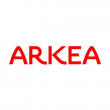Battle of the bonds begins as Clearstream targets Russian OFZs

Clearstream and Euroclear will do battle in Moscow for a slice of the $100 billion Russian OFZ bond market
German clearing and settlement business Clearstream has opened a new link to Russia’s CSD, the National Settlement Depository, that should allow customers based in the west to trade and settle Russian OFZ treasury bonds more easily.
The move represents the opening of fierce competition over the Russian OFZ market, estimated to be worth $100 billion. Rival Euroclear began clearing and settlement for OFZs in February. It also represents the gradual rehabilitation of Russian treasury bonds, as investors shake off memories of the country’s catastrophic default in 1998.
Under phase one of its OFZ clearing scheme, Clearstream is offering customers free of payment settlement in OFZ bonds. In phase two, the firm will introduce delivery versus payment settlement before the end of spring. The clearer has also said it will also introduce settlement for municipal and corporate bonds in the coming months.
Deutsche Bank Moscow will act as the account operator for Clearstream’s new link.
“I am delighted to confirm our phased approach to rolling out our new settlement services in Russia,” said Mark Gem, head of business management and member of the Clearstream executive. “We have built a robust solution building on our extensive knowledge of the market that we can now leverage to the benefit of our customers, including by passing on efficiencies in the form of custody fee cuts. By linking up to the new NSD, we are pleased to keep offering optimal access to the Russian capital markets.”
The Russian government has been pushing hard in the last 18 months to achieve its goal of turning Moscow into an international financial centre. Clearing and settlement in Moscow received a huge boost in November, with the country established a CSD, known as the NSD. The establishment of a CSD has been noted by many market observers including Serge Alexandre at Russian broker Otkritie as a critical step to attract outside investment to Russia. US investors in particular are legally required to deposit funds with a CSD.
Meanwhile, western investment firms and technology providers have been keen to access Russian securities markets by building new tools. In January, technology and connectivity provider TMX Atrium opened a new high-speed route from Frankfurt to Moscow, targeted at international investors that want to be able to trade Russian markets more easily. Then in February, Russian broker Renaissance Capital built a cross-margining tool for the Moscow FX and derivatives markets Micex Selt and Forts, and the London Stock Exchange’s international order book.
A feature on investing in Russia will appear in the March issue of Banking Technology. To receive regular copies of the magazine, register your interest here.











































